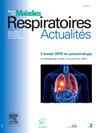特定人群:患者表现不佳2及以上
Q4 Medicine
引用次数: 0
摘要
表现状态(Performance status, PS)是衡量患者整体状况的指标。Karnofsky和ECOG (Eastern Cooperative Oncology Group)是使用最广泛的量表。三分转换量表允许两个分数之间的强相关性:ECOG 0-1 = Karnofsky 100-80%, ECOG 2 = Karnofsky 60-70%, ECOG 3-4 = Karnofsky 50-10%。影响PS的因素很多,无论是与癌症相关还是与合并症相关。尽管PS在非小细胞肺癌(NSCLC)和小细胞肺癌(SCLC)中存在可重复性缺陷,且PS差的癌症患者存在异质性,但仍是一个主要的独立预后因素。事实上,在研究中,PS应被视为一个分层因素。所有指南都将PS作为治疗决策工具,特别是在转移性非小细胞肺癌化疗的情况下。对于转移性疾病的分子靶点,无论PS如何,都应考虑靶向治疗,因为它具有高有效性和良好的安全性。关于免疫治疗的数据相当粗略。宽容似乎很好。关于疗效的发现需要仔细选择可能从这种治疗中受益的患者。根据欧洲药品管理局(European Medicines Agency)的呼吁,让我们建立专门针对身体虚弱的病人的研究,让他们参加临床试验,让他们从治疗进步中受益。为了将临床研究成果应用于一般人群,应该更多地参与特定患者群体。本文章由计算机程序翻译,如有差异,请以英文原文为准。
Populations particulières : Patients de Performance Status 2 et plus
Performance status (PS) is a measure of the patient's overall condition. Karnofsky and ECOG (Eastern Cooperative Oncology Group) are the most widely used scales. A three-point conversion scale allows a strong correlation between both scores: ECOG 0-1 = Karnofsky 100-80%, ECOG 2 = Karnofsky 60-70%, ECOG 3-4 = Karnofsky 50-10%. Numerous factors, whether linked to cancer or to comorbidities, can affect PS. PS remains a major independent prognostic factor in NSCLC (non small cell lung cancer) and SCLC (small cell lung cancer), despite its flawed reproducibility and the heterogeneity of cancer patients with poor PS. As a matter of fact, PS should be regarded as a stratification factor in research. All guidelines take PS into account as a therapeutic decision making tool, especially in the case of chemotherapy for metastatic NSCLC. Targeted therapy should be considered in case of metastatic disease with molecular targets regardless of PS, for its high effectiveness and good safety profile. Data regarding immunotherapy are rather sketchy. Tolerance seems to be fine. Findings regarding efficacy warrant careful selection of patients who might benefit from this therapy. In light of the European Medicines Agency call, let us build studies dedicated to patients as frail as they come and enroll them in clinical trials in such a way that they benefit, among others, from therapeutic advances. In order to apply clinical research findings to the general population, specific groups of patients should be more involved.
求助全文
通过发布文献求助,成功后即可免费获取论文全文。
去求助
来源期刊

Revue des Maladies Respiratoires Actualites
Medicine-Pulmonary and Respiratory Medicine
CiteScore
0.10
自引率
0.00%
发文量
671
 求助内容:
求助内容: 应助结果提醒方式:
应助结果提醒方式:


